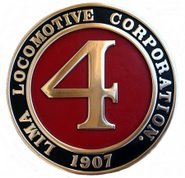This history was prepared by Robert Niles for the Eldorado National Forest in 1979. The El Dorado Western Railway blog will reprint serialized portions of Mr. Nile’s report in the coming months.ForwardThe following account of the California Door Company and its years of logging and sawmilling in El Dorado County has been put together from a wide variety of sources and information.
Hopefully, this report will give a better understanding of the way of life of those times, and the extent of past impacts imposed on the area by the railroad logging and the men who left their transitory mark.
By Robert Niles
Placerville, California
1979
History of the California Door Company and its logging railroadsThe California Door Company was formed in 1884 with the merger of three sash, door and millwork companies doing business in the San Francisco Bay Area.
Mr. Bartlett Doe was the first person on the scene in 1849 acting as agent for a Boston, Massachusetts sash and door company that was shipping manufactured millwork products to San Francisco merchants.
Mr. Doe was the possibility for establishing a manufacturing business of his own, an in 1850 entered into a wood working partnership with his brother John. This established the B.&J.S. Doe Company located at 36 Market Street in San Francisco.
The following year a competing business was formed by George and Nat Wilson to merchandize doors, window frames and millwork.
In 1861 Charles S. Doe, a brother of Bartlett and John, acquired an existing millwork company operating in San Francisco.
These companies grew and thrived with the prosperity of the times.
In 1884 the Doe brothers merged their business with George and Nat Wilson’s to establish the California Door Company. A new manufacturing plant was established in Oakland to produce doors, windows and blinds and was recognized as the largest plant of its kind in the west.
To assure an adequate and dependable supply of sugar pine and Ponderosa pine lumber for their new sash and door plant, the California Door Company in 1900, acquired some 30,000 acres of timberland in El Dorado County. A small sawmill was included and was located some 30 miles southeast of Diamond Springs at a gold mining settlement known as Dogtown in the Consumnes River Drainage.
I'll post the next installment in two weeks ...
.jpg) A 1916 shot of the engine house at the Caldor Mill. If you carefully gaze at the original photograph you’ll see three Diamond and Calor Railway locomotives.
A 1916 shot of the engine house at the Caldor Mill. If you carefully gaze at the original photograph you’ll see three Diamond and Calor Railway locomotives.


